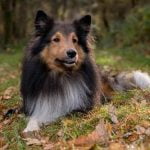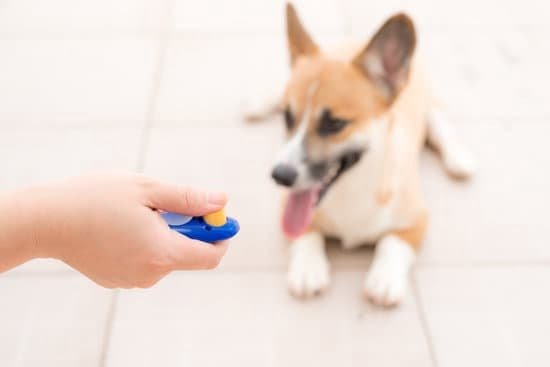Are you wondering how to train a dog with a new name? A dog’s name holds significance in shaping their identity and behavior. In this article, we will explore the importance of a dog’s name and provide practical tips on training your furry friend to respond to a new name.
Your dog’s name is more than just a label-it plays a vital role in their training, communication, and overall well-being. Whether you’ve adopted a rescue pup with an existing name or simply want to change your dog’s moniker, it’s essential to approach the process thoughtfully and skillfully.
Choosing the right new name for your dog is the first step in the training process. Once you’ve selected a suitable name, familiarizing your dog with the new moniker and using positive reinforcement techniques will help them acclimate to the change. Consistency, patience, and persistence are key elements in successfully training your dog to respond to their new name.
Join us as we delve into the intricacies of renaming your canine companion and celebrating the success of building a strong connection through effective communication.
Choosing the Right New Name for Your Dog
Consider Your Dog’s Personality and Appearance
When choosing a new name for your dog, take into consideration their personality and appearance. For example, if your dog is energetic and playful, you may want to choose a name that reflects these traits. Alternatively, if your dog has a unique physical characteristic such as a spot or marking, you could select a name that highlights this feature.
Avoid Confusing Names
It’s essential to avoid choosing a new name that sounds similar to commands you will use during training, such as “sit” or “stay.” This can lead to confusion for your pet when trying to differentiate between their new name and commands. Additionally, steer clear of names that sound like negative words or phrases to prevent unintentional association with something undesirable.
Introduce the Name Gradually
After selecting the perfect new name for your dog, introduce it gradually and gently by using positive reinforcement techniques. Your furry friend will soon learn to respond happily and willingly whenever they are called by their new moniker. Remember that patience and persistence are key in helping your pet adapt to their new identity.
Familiarizing Your Dog With the New Name
Introducing the New Name
Introducing a new name to your dog can be an exciting and challenging process. Once you have chosen the right new name for your furry friend, it’s important to start familiarizing them with it. Begin by using the new name consistently when you interact with your dog. Use it during playtime, feeding time, and when giving them commands.
Associating the New Name With Positive Experiences
To help your dog become familiar with their new name, associate it with positive experiences. Whenever you say the new name, follow it up with praise, pets, or a treat. This will create a positive association in your dog’s mind and make them more likely to respond to their new name.
Reinforcing the New Name
In addition to associating the new name with positive experiences, reinforce it through repetition. Call your dog by their new name multiple times throughout the day in a happy and excited tone. The more they hear their new name used in a positive context, the quicker they will become familiar with it.
Familiarizing your dog with their new name is a crucial step in training them to respond to it. By introducing the new name, associating it with positivity, and reinforcing it through repetition, you can help your dog become comfortable and responsive to their new identity.
Using Positive Reinforcement
Positive reinforcement is a very effective method for training dogs and can be especially helpful when teaching them a new name. This technique involves rewarding your dog with treats, praise, or toys when they exhibit the desired behavior – in this case, responding to their new name.
When using positive reinforcement to train your dog with a new name, start by saying their name in a cheerful and upbeat tone of voice. As soon as they respond by looking at you or acknowledging their name in any way, immediately reward them with a treat or verbal praise. This will help them associate their new name with something positive and enjoyable.
Consistency is crucial when using positive reinforcement. Every time your dog responds to their new name, make sure to reward them consistently. Over time, they will learn to associate the sound of their new name with something pleasant and will be more likely to respond accordingly.
| Positive Reinforcement | New Name Training |
|---|---|
| Effective method for training dogs | Helpful for teaching a new name |
| Rewards: treats, praise, toys | Rewarding response to the new name |
| Cheerful tone of voice | Rewarding immediate response |
Consistency Is Key
When training your dog with a new name, it is crucial to be consistent in using the name in everyday situations. This means using the new name every time you address or call your dog, whether at home, during walks, at the park, or in any other environment. Consistency helps your dog recognize and become familiar with the new name, reinforcing the association between the sound of their name and their identity.
Using the new name consistently also helps prevent confusion for your dog. If you use different names or variations of the new name, it can lead to uncertainty and make it more challenging for your dog to learn and respond to their new name. By maintaining consistency in using the new name, you can effectively communicate with your dog and facilitate their learning process.
In addition to verbal cues, using the new name consistently involves integrating it into your daily interactions with your dog. For example, when giving commands or praise, be sure to include their new name. Incorporating the new name into various contexts will help solidify its meaning for your dog and encourage them to respond reliably. Remember that patience and persistence are key as you continue reinforcing the use of the new name in everyday situations.
| Importance Level | Situation |
|---|---|
| High | Daily interactions with your dog |
| Medium | During walks and outdoor activities |
| Low | In unfamiliar environments or situations |
Patience and Persistence
Training your dog to respond to a new name can take time and consistency, but with patience and persistence, it is achievable. Here are some tips on how to effectively train your dog to recognize and respond to their new name:
- Start by using the new name consistently in a calm and positive tone. This will help your dog associate the new name with positive feelings.
- Use the new name when engaging with your dog during playtime, walks, feeding, and other daily activities. The more frequently you use the new name in various situations, the quicker your dog will learn to respond to it.
- When your dog looks at you or responds to the new name, immediately reward them with praise, treats, or their favorite toy. This positive reinforcement will create a strong association between their new name and positive outcomes.
Consistency is key when training your dog to respond to a new name. It’s important for all family members and anyone else who interacts with your dog to use the new name consistently. This will help prevent confusion for your pet as they learn their new identity. Remember that every dog learns at their own pace, so be patient and continue reinforcing the new name positively until they fully grasp it.
Troubleshooting
If your dog doesn’t seem to be responding to their new name, don’t worry – it’s not uncommon for this to happen during the training process. There are a few troubleshooting steps you can take to address this issue and help your dog become familiar with their new name.
First, it’s important to assess whether the new name you’ve chosen for your dog is a good fit. Consider if the name sounds similar to any commands or words commonly used in your household, as this could cause confusion for your pet. If necessary, consider choosing a different name that is distinct and easily distinguishable from other words used in training or everyday conversation.
Another potential issue could be that your dog simply hasn’t associated their new name with positive experiences yet. In this case, it’s crucial to continue using positive reinforcement techniques when using the new name with your dog. Use treats, praise, and playtime to create positive associations with their new name, which will encourage them to respond more enthusiastically.
Additionally, consider whether you have been consistently using the new name in everyday situations. It’s important that everyone in the household is on board with using the new name consistently and avoiding any confusion by resorting back to the old name. Consistency is key in helping your dog recognize and respond to their new moniker.
Celebrating Success
After successfully choosing the right new name for your dog and familiarizing them with it, it’s time to celebrate the success of training and reinforcing the new name. By doing so, you can strengthen the bond with your dog and make the training process a positive experience for both of you.
To reinforce the new name and bond with your dog, consider the following tips:
1. Treats and Rewards: Whenever your dog responds to their new name, reward them with their favorite treats or toys. This positive reinforcement will help them associate their new name with a pleasant outcome, making them more likely to respond to it in the future.
2. Playtime and Affection: Spend quality time playing with your dog and showing them affection when they respond to their new name. Dogs thrive on attention from their owners, so using playtime and cuddles as rewards can further solidify their connection to their new name.
3. Training Games: Engage in fun training games that involve using your dog’s new name. For example, hide treats around the house and call out their new name as they search for them. This not only reinforces their response to their new name but also provides mental stimulation and bonding time.
By celebrating the success of training and reinforcing the new name, you can create a positive association for your dog and strengthen your bond as well. Remember that patience and consistency are key in this process, but by taking these steps, you’ll soon have a well-trained dog who responds eagerly to their new name.
Conclusion
In conclusion, training a dog with a new name is not only about teaching them to respond to a different word, but also about building a stronger bond through communication and understanding. By choosing the right name for your dog and familiarizing them with it in a positive and consistent manner, you can successfully train them to respond to their new identity.
Using positive reinforcement is crucial in this training process, as it not only encourages your dog to respond to their new name but also strengthens the trust and connection between the two of you. Consistency is key when using the new name in everyday situations, which helps your dog recognize and internalize their new identity.
Patience and persistence are also essential in training your dog to respond to the new name. It may take time for them to fully adjust, but with dedication and consistency, they will eventually learn to associate their new name with positive experiences. If your dog doesn’t respond to the new name at first, troubleshooting techniques such as using a higher-value treat or practicing in a quiet environment can help overcome any challenges.
Ultimately, celebrating success by reinforcing the new name and bonding with your dog is an important part of the training process. By taking the time to communicate effectively with your pet and incorporating their new name into your daily interactions, you can strengthen your connection and create a harmonious relationship based on trust and understanding.
Training your dog with a new name is not just about teaching them a word; it’s about deepening the bond between you and creating a positive foundation for future training endeavors.

Welcome to the blog! I am a professional dog trainer and have been working with dogs for many years. In this blog, I will be discussing various topics related to dog training, including tips, tricks, and advice. I hope you find this information helpful and informative. Thanks for reading!





